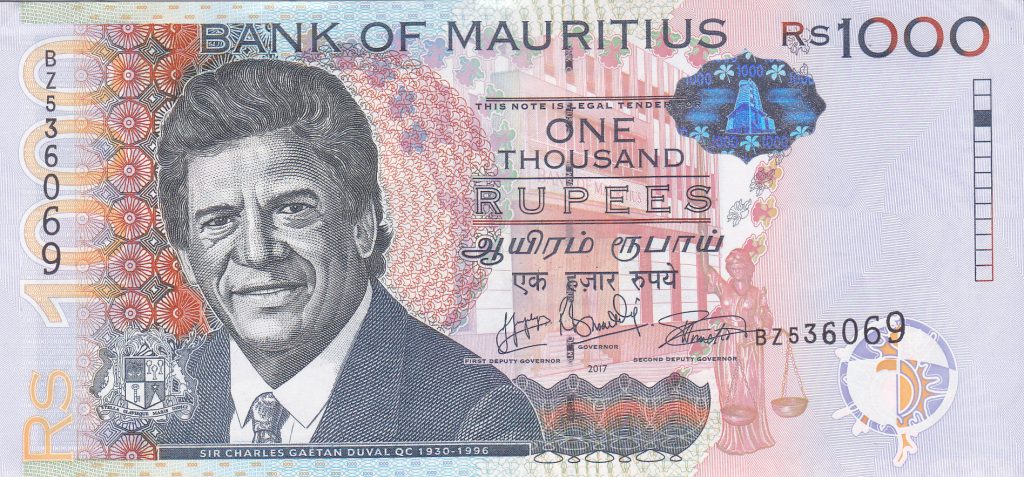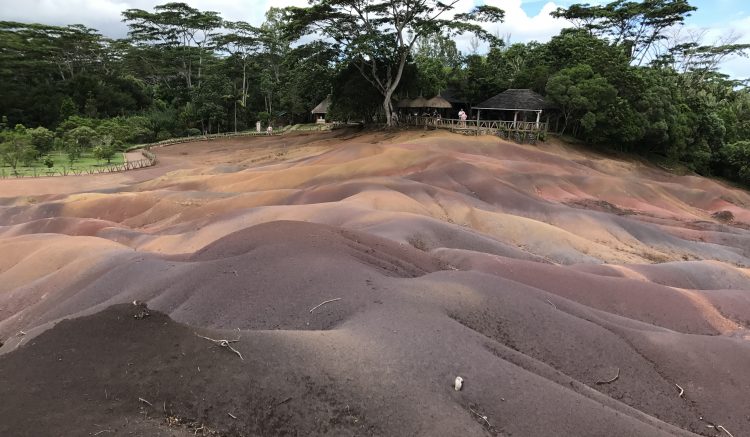In 2017, I was already in Reunion so it was easy to travel to Mauritius, the neighbouring island. Mauritius has a very interesting mix of Indian sub-continent, French and Chinese cultures. This is reflected in the buildings, place names, and the cuisine. There are many beautiful places to see including beaches, tea plantations, hills and geological features. Getting around by public transport didn’t seem very convenient, so I went by taxi between longer distances with a bit of sightseeing on the way. Fortunately, I had a friend of a friend there who gave me a lot of great tips.
My journey started from the airport in the southern part of the island. Then I headed west and up the coast. There didn’t seem to be as much to see on the east coast of the island. I will write separate posts on the different areas I visited during my travel to Mauritius.
Highlights
- Blue Bay Beach in Grand Port
- Savanne District
- La Route du Thé
- Bois Cheri Tea Factory
- Grand Bassin Temple
- Black River Gorges National Park
- Alexandra Falls
- Rivière Noire
- Chamarel Waterfall
- Chamarel Seven Colored Earth Geopark
- Plaines Wilhems
- Trou Aux Cerfs Volcano
- Quatre Bornes also known as La Ville des Fleur
- Port Louis Craft Market
- Port Louis Street food tour
- Mauritius Postal Museum
- Port Louis Central Market
- Aapravasi Ghat World Heritage Site
- Pamplemousse
- L’Aventure du Sucre museum
- Trou-aux-Biches beach area
- Mon Choisy Public Beach
- Pereybere Public Beach
Before you go
- The Republic of Mauritius includes the islands of Mauritius, Rodrigues, Agalega, and St. Brandon. Most people visit Mauritius
- There are nine regions or districts on Mauritius island
- Grand Port is the location of the international airport
- UK and US passport holders don’t need a visa for up to 60 days
- Port Louis is the Capital
- Mauritian Creole, French and English are the most commonly spoken languages
- Summer is hot and humid from October to April and winter is the rest of the time with mild temperatures
- You will need a car to get around the island, either rented or a taxi
- The Dodo bird is the national symbol
- Hinduism is the majority religion
Transport
- Sir Seewoosagur Ramgoolam International Airport is located in the Grand Port District
- Some hotels have transport to the beach by a shuttle bus. I used this for getting to Blue Bay
- To get around the island, a local friend recommended taking a taxi if I didn’t want to hire a car for longer distances
- For close transport, you can take buses but I couldn’t find a convenient schedule for the longer distances
Accommodation
- After arriving at the airport I spent the first two nights at the Holiday Inn Mauritius Mon Trésor. This felt very luxurious after some interesting stays in Madagascar. The rooms were large and comfortable. And they had a free shuttle to their private beach house in Blue Bay.
- On the northwest coast, I spent a few days at La Tonnelle Guest House in Trou aux Biches. It was a great, simple place to stay for easy access to many beaches.
Currency
The official currency is the Mauritian rupee. As of December 2023, one British pound is about 56 rupees. I recommend to check the currency conversion just before you leave as this fluctuates

Food
The food in Mauritius is a definitely highlight. Its combination of Indian, Chinese and French influences provide a lot of variety and fusions of flavours. Going to the local markets was great fun, to explore the different ingredients. There is also a lot of delicious fresh seafood.
Curries were very popular menu options, and the Mauritian fish stew I tried was delicious. I really liked how they integrated fish and seafood into the different cuisines. Also, at the local markets there were fresh and also dried fish.
One of the simple and typical food is bol renversé, which means upside down bowl in French. It is stir-fry formed into a bowl-shape with rice or noodles. That is flipped over so it is served in a reversed bowl shape. It can be topped with a fried egg. I have made it at home, and the recipe is here. The stir-fry contains a mixture of vegetables and the chicken is optional.
Also, I was lucky to have a great, private street food tasting tour in Port Louis. In addition to trying a number of different foods, they also took me to the top of an old Chinese clan house to enjoy the view. The Chinese bakeries were excellent and had some unusual desserts and snacks that I had never seen before.
For beverages, there are a number of local beers which were tasty and refreshing. However, my favourite thing to drink was the tea, which is grown on the island. I visited one tea plantation and had a tea tasting at the end of the tour. They’re so fragrant and have delicate flavours.
FAQs
Q: Do I need a tour guide?
A: No, not for most of the island but you would either need a car or taxi to get around
Q: Do people speak English?
A: Yes most people speak English
Q: Can I travel solo?
A: Yes it is very safe
Q: How easy is it to send postcards?
A: It is easy to find postcards in the large cities. See Sending Postcards from Abroad for details on cost and the time it took to reach the USA.
Go to Country Map
